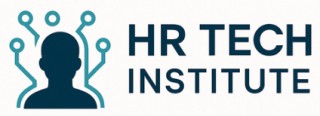Understanding Applicant Tracking Systems
Decoding the Role of Applicant Tracking Systems in Recruitment
Applicant Tracking Systems (ATS) have fundamentally transformed the recruiting landscape across various industries. By automating and streamlining the job application process, these systems help hiring managers and recruiters efficiently manage the influx of applications. ATS platforms are particularly adept at resume parsing, thereby saving time in the initial screening of candidates.
Designed to enhance recruitment processes, ATS help identify top talent quickly by scanning resumes for specific keywords and qualifications related to the job opening. This rapid screening process ensures that recruiters are not overwhelmed with volumes of applications, while also maintaining a paper-free environment. Candidates benefit as well; a more organized system contributes to a better candidate experience.
An ATS collects and organizes applicant data, making it accessible for recruitment teams to track throughout the hiring process. By leveraging tracking systems, these platforms enable recruiters and hiring managers to maintain digital records across various stages—from initial sourcing on job boards to interview scheduling and final selection.
Moreover, these systems ensure that candidate information is secure and contributes to data protection efforts. By managing digital records efficiently, ATS support comprehensive data management, which is crucial in fast-paced recruitment environments.
For those exploring how to "adjust user sync settings in UltiPro," you can find useful insights
here. This resource offers guidance crucial for tailoring ATS functionalities to meet specific organizational needs.
The Importance of Digital Record Keeping
The Crucial Role of Digital Record Keeping in Modern Hiring Processes
In today's fast-paced recruitment landscape, maintaining thorough digital records is more vital than ever. With the rise of applicant tracking systems (ATS), the transition from cumbersome paper-driven processes to efficient digital solutions has significantly simplified the recruitment process.
The use of digital records streamlines the tracking system by collating and organizing large volumes of data. This includes everything from a candidate's resume to their interview schedules, ensuring that every step taken during the hiring process is documented and accessible. Such meticulous management of data not only aids in enhancing the candidate experience but also supports recruiters and hiring managers in making informed decisions, ultimately improving their ability to attract top talent.
Moreover, the integration of digital records within ATS platforms provides recruiters the advantage of easily accessing historical job applications. This record-keeping serves not just to streamline the recruitment process but also as a paper-free solution that increases efficiency. With digital records, screening and sourcing candidates becomes a more seamless process, allowing recruiters to dedicate more time to candidate engagement and less on administrative tasks.
Data protection is another crucial aspect where digital record keeping shines. In maintaining digital records, ATS software ensures that sensitive applicant data is securely stored and managed, aligning with privacy regulations. This is particularly important in maintaining the integrity and confidentiality of candidate information, reducing the risk of data breaches.
These digital innovations are not merely about streamlining processes but also about creating a more robust recruitment infrastructure that benefits both recruiters and candidates alike. To delve deeper into how digital records enhance workforce management, you might find this
information on optimizing workforce management particularly insightful.
How ATS Manage Digital Records
Efficient Organizations in Managing Applicant Records
Harnessing technology to manage digital records has become a crucial part of modern hiring processes. Applicant Tracking Systems (ATS) have transformed the way organizations handle applicant data, maintaining efficient and streamlined recruitment operations.
ATS platforms are designed to capture and process candidate information, including resumes, cover letters, and interview notes, in a single system. By integrating resume parsing technology, ATS software can quickly scan documents for essential information and systematically categorize it for easy access. This function not only enhances the recruitment process but also aids recruiters and hiring managers in screening potential top talent with greater speed and accuracy.
These systems excel in managing digital records by offering functions like interview scheduling and candidate sourcing, which simplify the flow of recruitment activities. A notable advantage is a substantial reduction in the need for paper-based processes, ushering organizations towards a paper-free workflow. ATS systems deliver a robust candidate experience by minimizing redundancies in data entry and curating comprehensive profiles that aid hiring managers in making informed decisions without delay.
Crucially, data protection is a priority. State-of-the-art Applicant Tracking Systems ensure that personal and sensitive information is securely stored in compliance with data protection regulations, safeguarding candidates' trust and organizational reputation.
To explore more about how managing digital records in other HR functions can enhance operational efficiency, you can visit
enhancing payroll efficiency with pro payroll solutions.
Overall, ATS platforms are integral to the modern hiring process, embodying the best practices and technological advancements necessary for efficiently tracking systems and overseeing candidate data effectively.
Benefits of Digital Records in ATS
Enhancing Efficiency and Accuracy in Recruitment
Digital records within Applicant Tracking Systems (ATS) play a significant role in enhancing the efficiency and accuracy of the recruitment process. By shifting from traditional paper-based methods to digital records, recruitment becomes more streamlined and organized.
- Improved Candidate Management: ATS platforms allow for efficient candidate sourcing and tracking. Recruiters can easily access and manage digital records, retrieving applicant data instantly. This minimizes time spent on administrative tasks and frees up time for more strategic recruitment activities.
- Comprehensive Data Storage: Digital records mean that all candidate information, including resumes and interview notes, is stored within the system. This centralized repository ensures that hiring managers have a full view of a candidate's history at their fingertips, facilitating informed decision-making.
- Enhanced Screening Process: With the best ATS software, resume parsing and the initial screening process become more accurate. Automated systems can quickly sift through data, highlighting top talent based on customized criteria, which reduces the time to identify suitable candidates.
- Streamlined Communication: ATS systems integrate with job boards and often come with communication features, ensuring that all interactions with candidates are logged and easily accessible. This brings transparency to the hiring process, enhancing the candidate experience.
- Paper-Free Environment: Moving to digital records reduces physical storage needs and supports environmental responsibility. Additionally, it simplifies compliance with data protection regulations, reducing the risk of misplaced or damaged paperwork.
- Recruitment Process Optimization: By optimizing how candidate data is captured and tracked, ATS software supports continuous improvement in recruitment processes. This leads to better candidate experiences and more efficient recruitment outcomes.
Overall, leveraging digital records through ATS platforms brings transformative benefits to managing digital applications and recruiting top talent effectively.
Challenges in Digital Record Management
Challenges Associated with Digital Records in ATS Platforms
Managing digital records within applicant tracking systems (ATS) can be daunting. While digital records facilitate an efficient recruitment process, they pose challenges that hiring managers and recruiters must navigate.
One significant challenge is data protection. With vast quantities of sensitive information such as resumes, candidate data, and applicant details stored, ensuring data security is crucial. Any breach can lead to significant ramifications, both legally and reputationally for organizations.
Another difficulty lies in resume parsing and standardization. Different formatting styles in submitted resumes can delay the job screening process as systems must accurately extract data. This necessitates a robust resume parsing mechanism within the ATS to effectively handle diverse submission formats.
Furthermore, ATS platforms often encounter integration issues with other HR software and job boards. Smooth integration is essential for enhancing recruitment efficiency, yet compatibility issues can hinder the process and result in fragmented data management.
Time constraints in managing digital records can also be a challenge. Despite the benefits offered by ATS platforms, recruiters must monitor and update digital records continuously. In an evolving hiring landscape, maintaining accurate and up-to-date applicant records is vital to the system's effective operation.
Lastly, there’s the issue of candidate experience. An overly automated tracking system might compromise personal interactions, critical for engaging top talent. Balancing automation with personalized communication can elevate the overall recruitment and hiring process.
Recognizing these challenges allows organizations to deploy better strategies. Engaging with best practices ensures that ATS platforms provide a more seamless candidate sourcing and recruitment process, ultimately attracting top talent.
Future Trends in ATS and Digital Record Keeping
Looking Ahead: The Evolution of Digital Record Keeping in ATS
As the job recruitment landscape rapidly evolves, incorporating innovative technologies in Applicant Tracking Systems (ATS) is not just imminent but necessary. Already, digital records have transformed how recruiters manage candidate information, streamlining the recruitment process. Looking forward, certain trends are anticipated to further redefine digital record keeping in ATS platforms.
Improving the candidate experience will remain of utmost importance. Future systems strive for efficiency by reducing manual input through advanced resume parsing techniques. This not only saves time but also ensures data accuracy, facilitating better candidate screening and assessment. With the integration of smarter analytics and AI, recruiters will be able to derive actionable insights from vast pools of candidate data.
To cater to increasingly digital-savvy applicants, ATS systems are likely to focus more on enhancing recruitment processes with seamless integration across multiple job boards and social media channels. This approach ensures that top talent is not lost due to cumbersome application processes.
However, as the reliance on digital records grows, so does the challenge of ensuring data protection. Future ATS will need to incorporate robust security measures to safeguard sensitive candidate information. Ensuring compliance with global data protection regulations will be crucial in maintaining trust between applicants and employers.
Finally, the endeavor of going paper-free is gaining momentum. As hiring managers increasingly appreciate the efficiency of managing digital records, the transition to fully digital systems becomes more plausible. Future developments point to more streamlined, intuitive, and integrated ATS platforms that empower recruiters and applicants alike.
These trends underscore the dynamic nature of Applicant Tracking Systems and their capacity to adapt to the needs of both job seekers and hiring managers in a swiftly changing digital world.













